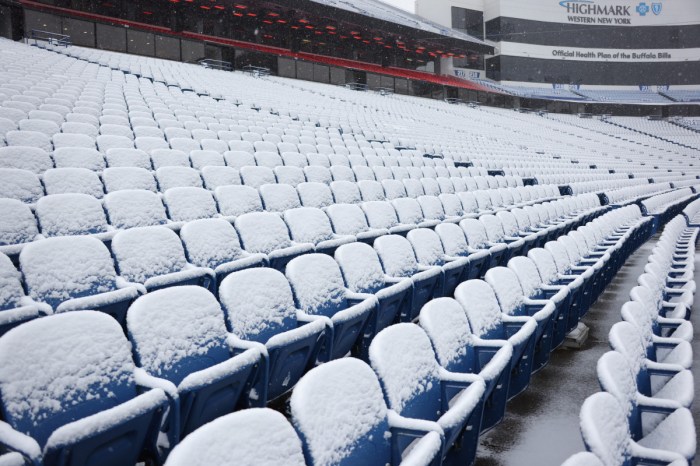Tips dealing with snow and ice – navigating winter’s challenges can feel daunting. This guide covers everything from prepping your home and vehicle to safe outdoor activities and handling potential damage. From winterizing your car to protecting your pipes, we’ve got you covered for a smooth and safe winter season.
We’ll delve into essential supplies, safe driving techniques, home maintenance tips, and even outdoor adventures in icy conditions. We’ll also look at dealing with damage, specific weather situations, and vital safety precautions.
Preparing for Snow and Ice
Winter storms can be disruptive, but careful preparation can minimize their impact. Knowing what to expect and having the right supplies on hand can make a significant difference in staying safe and comfortable during the cold months. This guide provides essential steps to prepare your home and vehicle for winter weather.Winter weather preparedness isn’t just about surviving a storm; it’s about maintaining safety and comfort throughout the season.
By taking proactive measures, you can enjoy the beauty of winter without undue stress or worry.
Essential Supplies
Having the right supplies on hand can be the difference between a smooth and a stressful winter storm. These essentials will help you stay safe and comfortable during a winter storm.
- Food and Water: Stock up on non-perishable food items, canned goods, and bottled water. Consider a supply that can last for at least three days, as storms can disrupt access to groceries.
- Warmth: Gather extra blankets, warm clothing, and potentially a space heater (use with caution). A portable charger for your phone is crucial for communication.
- Safety: Include a first-aid kit, flashlights with extra batteries, a battery-powered radio, and a whistle for emergencies.
- Other Essentials: A shovel, ice melt, sand or kitty litter for traction, and a small hand-crank or battery-powered generator for backup power can be very useful.
Winterizing Your Vehicle
Properly winterizing your vehicle is crucial for safe travel in winter conditions.
- Tire Pressure: Check and adjust tire pressure according to the recommendations in your vehicle’s owner’s manual. Increased tire pressure is usually recommended during winter for improved traction.
- Fluids: Ensure your antifreeze is at the correct level and that the windshield washer fluid is winter-grade (or has antifreeze added) to prevent freezing.
- Lights: Verify that all exterior lights (headlights, taillights, brake lights) are working correctly. Consider having extra bulbs in your vehicle for emergencies.
- Other Vehicle Checks: Inspect wipers and make sure they are functioning correctly, and consider keeping a small snow brush in your car. A car emergency kit with jumper cables and a blanket is also wise.
Securing Outdoor Objects
Protecting your outdoor belongings from damage during a winter storm is important.
- Furniture: Cover outdoor furniture with waterproof covers to shield it from snow, ice, and wind damage. Consider bringing patio furniture indoors if possible.
- Plants: Protect vulnerable plants with blankets or burlap. Ensure they are appropriately staked to prevent wind damage.
- Other Items: Secure outdoor tools, grills, and other equipment to prevent them from being blown away by strong winds.
Protecting Your Home Exterior
Protecting your home’s exterior is important for minimizing damage from ice and snow.
- Ice Dams: Take steps to prevent ice dams from forming on your roof by ensuring proper attic ventilation. Consider using a gutter guard to prevent ice buildup.
- Snow Removal: Clear snow from your roof and gutters regularly to avoid damage to the structure. Consider hiring a professional if needed, especially for high-pitched roofs.
- Gutters and Downspouts: Ensure your gutters are clear and downspouts are directing water away from the foundation to prevent water damage.
Driving in Snow and Ice
Winter driving presents unique challenges, requiring drivers to adapt their techniques and be prepared for unpredictable conditions. Understanding safe practices and having a strategy for handling common winter driving issues is crucial for staying safe and arriving at your destination without incident. Icy roads and snowy conditions demand extra caution and a proactive approach to driving.
Safe Driving Practices on Icy Roads
Maintaining a safe following distance is paramount on icy roads. Increased stopping distances are essential because of the reduced traction. A longer following distance provides more time to react to unexpected events. Avoiding sudden maneuvers is critical. Sudden braking, acceleration, or steering inputs can lead to loss of control.
Instead, smooth and gradual adjustments are key. Anticipate potential hazards and adjust your speed accordingly.
Strategies for Controlling Your Vehicle on Slippery Surfaces
Maintaining traction on slippery surfaces requires a mindful approach to steering and acceleration. Gentle inputs are essential; abrupt movements can cause loss of control. When accelerating, ease into the gas, avoiding sudden surges. Similarly, when braking, use light, consistent pressure on the brakes. This approach minimizes the risk of skidding.
Handling Common Winter Driving Challenges
Understanding how to address common winter driving challenges like hydroplaning and black ice is essential. Hydroplaning occurs when water on the road surface builds up ahead of the tires and causes a loss of contact between the tires and the road. Slowing down and maintaining a safe speed are critical to avoid this. Black ice, a thin layer of ice that is nearly invisible, poses a serious threat to drivers.
It is often found on bridges and overpasses and can cause sudden loss of traction. Be aware of these conditions and adjust your driving accordingly.
Methods for Handling Vehicle Stuck in Snow
Getting a vehicle stuck in the snow can be frustrating. Here’s a step-by-step procedure for safely exiting a vehicle stuck in the snow: Assess the situation first; if visibility is poor, seek assistance. Engage four-wheel drive if available. If not, avoid using the gas pedal, as this can cause the tires to spin. Instead, use a shovel to clear snow around the tires, and apply sand or cat litter to increase traction.
If the situation persists, call for assistance from a trusted source.
Comparison of Winter Tires
Different winter tires offer varying benefits and are designed to address specific winter driving conditions. A comparison of various winter tires is useful to make informed choices based on your needs and driving environment. Look for tires that are specifically designed for snow and ice. These tires typically have a unique tread pattern designed to maximize traction on slippery surfaces.
Some offer specialized features, like studs for extra grip on very icy roads, or a wider tread pattern for better surface contact. The choice of winter tires should align with the severity of the winter driving conditions you will encounter.
Home Safety During Snow and Ice
Winter weather can be hazardous, and taking proactive steps to ensure your home’s safety is crucial. Preparing for icy conditions inside and out can prevent accidents and protect your property. By implementing simple strategies, you can minimize the risks associated with snow and ice, and maintain a warm, safe environment throughout the season.Understanding the potential dangers of ice and snow allows you to take precautions to mitigate the risks.
Freezing temperatures and accumulating snow can lead to a variety of problems, from slippery walkways to burst pipes. Proactive measures can protect your family and your home from these hazards.
Preventing Slips and Falls
Maintaining safe footing both inside and outside your home is paramount during icy conditions. Clearing walkways and steps promptly is vital to prevent falls. Use salt, sand, or ice melt to create traction on icy surfaces. Ensure proper lighting is available to illuminate pathways, particularly in areas where visibility is reduced. Inside, ensure that spills are cleaned immediately and use rugs or mats to prevent slipping on potentially wet or icy floors.
Consider using non-slip floor mats in bathrooms and kitchens.
Emergency Preparedness
Planning ahead for winter weather emergencies is essential for safety and well-being. Having a well-stocked emergency kit is vital. This should include essential supplies like food, water, batteries, flashlights, and first-aid items. Knowing local emergency contact numbers and evacuation routes is also crucial. Have a communication plan in place with family members to ensure everyone knows how to contact each other in case of an emergency.
Include alternate communication methods, like charging backup cell phones and having a battery-operated radio.
Dealing with snow and ice can be tricky, but a little preparation goes a long way. Knowing how to safely navigate snowy sidewalks is crucial, and finding great deals on winter gear can be just as helpful. For example, checking out thrifting 101 tips and tricks for ways to score amazing winter coats and boots at a fraction of the cost is a smart move.
Plus, these budget-friendly finds can help you stay warm and stylish through the icy months.
Protecting Pipes from Freezing, Tips dealing with snow and ice
Protecting your plumbing system from freezing is critical during winter. Insulate exposed pipes, especially those in unheated areas like basements or attics. Wrap pipes with insulation materials like pipe wrap or foam sleeves. If possible, maintain a steady temperature within these areas. If temperatures are expected to drop significantly, consider running a small amount of warm water through exposed pipes to prevent them from freezing.
Know the signs of frozen pipes, like unusual noises or leaks.
Proper Insulation and Weatherproofing
Proper insulation and weatherproofing are vital for maintaining a warm home. Ensure that your home’s insulation is adequate and that any gaps or cracks are sealed. Caulk or weatherstrip any openings around doors and windows. Regularly inspect and clean your gutters to prevent ice dams from forming. Ice dams can lead to water damage, which can affect the insulation of your home.
Install draft stoppers to prevent cold air from entering.
Home Maintenance Tasks
Simple home maintenance tasks can prevent problems during severe winter weather. Regularly inspect and clear your roof of snow and ice. This will prevent the weight of snow from damaging the roof or causing water damage. Check for any signs of water damage or leaks in the house and take corrective actions promptly. Keep your chimneys clear of snow and ice to prevent buildup and possible chimney fires.
Consider hiring a professional to check and maintain your heating system. This is particularly important during severe winter weather.
Outdoor Activities in Snow and Ice
Winter offers a unique opportunity for thrilling outdoor adventures. From exhilarating winter sports to peaceful winter walks, embracing the snowy landscape requires careful preparation and awareness. Understanding the risks and taking necessary precautions can significantly enhance your enjoyment and safety.Enjoying the winter wonderland demands a proactive approach. A thorough understanding of the weather conditions, appropriate clothing, and emergency preparedness will ensure a safe and unforgettable experience.
Winter activities can be incredibly rewarding, but proper preparation is crucial to mitigating risks and maximizing enjoyment.
Preparing for Winter Activities
Before heading outdoors, comprehensive planning is vital. Accurately assessing the weather conditions and potential hazards is paramount. This includes checking the forecast for temperature, wind speed, precipitation, and visibility. Real-life examples include a recent blizzard warning in the Rockies that forced the closure of ski resorts and cancelled numerous outdoor events.
Appropriate Clothing for Cold Weather
Layering is key to staying warm and comfortable in cold weather. Start with moisture-wicking base layers next to your skin, followed by insulating mid-layers, and a waterproof and windproof outer layer. This layered approach allows you to adjust your clothing to changing conditions. For instance, a fleece jacket can be added or removed depending on the intensity of the cold or activity level.
Protecting extremities like hands, feet, and head is also crucial. Warm hats, gloves, and waterproof boots are essential to prevent heat loss.
Preventing Hypothermia and Frostbite
Hypothermia and frostbite are serious conditions that can occur in cold weather. Hypothermia happens when your body loses heat faster than it can produce it, leading to a dangerously low body temperature. Frostbite occurs when body tissues freeze. Knowing the warning signs is essential for preventing these conditions. These include shivering, confusion, and numbness.
In extreme cases, immediate medical attention is necessary. Staying hydrated is also crucial. Drinking plenty of fluids can help regulate your body temperature. Maintaining proper hydration is essential to combat the risk of dehydration.
Winter Hiking or Skiing Trip Preparation
Winter hiking or skiing trips require extra preparation. Check the trail conditions and expected weather. Bring sufficient food and water. Inform someone of your itinerary and expected return time. Carry emergency supplies such as a first-aid kit, extra clothing, a flashlight, and a whistle.
For example, carrying a fully charged cell phone with a portable charger is recommended, especially if you are traveling far from civilization.
Checking Weather Forecasts
Accurately predicting the weather conditions is crucial for safe outdoor activities. Before embarking on any winter activity, thoroughly check the weather forecast. Be aware of potential hazards such as icy patches, heavy snowfall, or strong winds. Knowing the expected weather conditions will help you make informed decisions and take necessary precautions. For instance, a sudden snowstorm can dramatically alter trail conditions, and checking the forecast ensures you can adapt your plans accordingly.
Dealing with Snow and Ice Damage: Tips Dealing With Snow And Ice
Winter storms can wreak havoc on vehicles and property, leaving behind significant damage. Understanding the steps to take after a storm is crucial for minimizing losses and ensuring a smooth recovery process. This guide will Artikel the critical steps to take when dealing with snow and ice damage to your vehicle, home, and belongings.Dealing with the aftermath of a severe winter storm requires a methodical approach.
This involves documenting damage, contacting insurance companies and authorities, and implementing safe clearing procedures for walkways and driveways. By following the Artikeld steps, you can effectively navigate the challenges and get back on track.
Vehicle Damage Assessment
After a snow or ice storm, carefully inspect your vehicle for any damage. This includes dents, scratches, broken windows, or damage to the exterior. Take detailed photos of all visible damage. Note the location, severity, and any other relevant details, like the presence of debris or ice that may have contributed to the damage. Documenting the damage promptly is vital for insurance claims.
Be sure to document the damage before clearing the snow and ice from your vehicle.
Property Damage Assessment
Inspect your property for any damage caused by snow and ice. Look for broken or damaged roof shingles, damaged siding, or cracks in the foundation. If possible, take photos of the damage, noting the location and extent of the damage. Also, document any damage to landscaping or other outdoor features. This meticulous record-keeping is essential for insurance claims and will assist you in the recovery process.
Insurance and Local Authority Contact
Contact your insurance company immediately after identifying any significant damage. Provide them with a detailed report of the damage, including photos. Report the damage to local authorities, such as the police department or city/county offices, if necessary. This helps them in their response and recovery efforts, and may provide crucial information in case of widespread damage. They might also have specific reporting procedures or guidelines that you should follow.
Resources for Help After Snow or Ice Damage
Several resources can assist you during the recovery process. Local government agencies, such as city or county offices, may provide resources for property damage assistance. Your insurance company will also have a network of repair services and resources that they can connect you with. Your community’s support networks and volunteers often provide valuable assistance.
- Local Government Agencies: City or county offices can offer resources for property damage assistance, reporting procedures, and potential support networks.
- Insurance Companies: Your insurance company provides a network of repair services and resources, including claims processing, and may offer guidance on damage assessment and repair procedures.
- Community Support Networks: Local support groups, community centers, and volunteer organizations can offer assistance with recovery efforts, including clearing snow and ice, and providing emotional support.
- Emergency Services: Contact emergency services if you have any immediate safety concerns. This includes severe structural damage, hazardous materials spills, or other critical situations.
Safe Snow and Ice Clearing Procedures
Clearing snow and ice from walkways and driveways is essential for safety. Use appropriate equipment like snow shovels or snow blowers. Always clear snow and ice away from walkways and driveways, making sure they are safe for pedestrian and vehicle traffic. Ensure the area is clear of any potential hazards, like ice or snow build-up, before anyone enters or exits the property.
Dealing with snow and ice can be a real pain, but a little preparation goes a long way. One key tip is to ask yourself, “Does this item still serve a purpose?” This simple question, like the one used in decluttering anything, can help you evaluate your possessions, particularly when dealing with winter’s impact on your space. Clearing out unnecessary items, like old snow shovels or forgotten winter gear, can create more room and reduce the risk of accidents.
This will help you stay organized and prepared for the next snowfall. Knowing how to declutter will help you get through any winter weather more easily. Refer to one question to help you successfully declutter anything for a more in-depth look at this helpful method.
- Equipment Selection: Use appropriate equipment like snow shovels, snow blowers, or other tools, depending on the amount of snow and ice and the size of the area.
- Safety Precautions: Wear appropriate clothing and footwear to protect yourself from the cold and potential slips or falls. Clear areas of snow and ice completely, making sure they are safe for pedestrian and vehicle traffic.
- Clearance Procedures: Clear snow and ice away from walkways and driveways. Ensure the area is clear of any potential hazards, like ice or snow build-up, before anyone enters or exits the property.
Specific Situations
Winter weather can be unpredictable, and understanding the nuances of different snow and ice conditions is crucial for staying safe and prepared. From the seemingly benign snowfall to the treacherous effects of freezing rain, each type of precipitation presents its own unique challenges and requires specific precautions. This section will delve into the diverse aspects of winter weather, highlighting the impact on various facets of daily life, from travel to infrastructure.Different snow and ice conditions have vastly different implications for safety.
A light dusting of snow might just require a shovel, while a heavy snowfall can lead to significant travel disruptions and even power outages. Understanding the specific characteristics of each type of snow and ice is paramount to effective preparation and response.
Types of Snow and Ice Conditions
Snow and ice conditions vary significantly, influencing safety measures and the impact on infrastructure. Different types of precipitation, like freezing rain, sleet, and various snow types, can significantly alter driving conditions, building stability, and overall safety. Accurately assessing the conditions is vital for proactive measures.
- Freezing rain, a phenomenon where rain freezes on contact with surfaces, often results in a dangerous coating of ice on roads and power lines. This ice can cause significant damage to infrastructure and create hazardous driving conditions, often requiring significant road closures. Examples include the widespread power outages and traffic disruptions seen in many winter storms.
- Sleet, a mixture of rain and snow, creates a layer of ice on surfaces, making driving and walking extremely dangerous. Sleet can be particularly problematic for outdoor activities and can also significantly affect travel plans and schedules. The accumulation of ice on bridges and overpasses, for instance, can lead to significant delays or closures.
- Heavy snowfall can lead to significant travel disruptions, including road closures and delays. Significant accumulation of snow can also cause structural issues, such as the collapse of roofs or branches on power lines.
- Icy conditions on sidewalks and pathways are a major concern for pedestrian safety. These conditions increase the risk of slips and falls, potentially resulting in serious injuries. Appropriate footwear and caution are crucial to avoid accidents.
Effects on Infrastructure and Activities
Different weather conditions have distinct effects on infrastructure and activities. The severity and duration of the storm significantly impact the level of disruption.
Dealing with snow and ice can be tricky, but sometimes a little creativity is key. For example, instead of just shoveling, maybe you could try a unique method, like using a homemade ice scraper with a different angle. This kind of problem-solving, a core component of creativity, can really help you get ahead in life. Learning to think outside the box, like in how creativity can help you get ahead in life , can translate into finding clever solutions for any winter challenge.
So, next time the snow falls, remember to unleash your inner innovator for a smoother, more efficient experience.
- Freezing rain can coat power lines, causing widespread power outages and disrupting essential services. The weight of the ice accumulation can also damage trees and branches, potentially causing structural issues.
- Sleet, with its icy coating, poses a major threat to road safety. The accumulation of ice can lead to significant delays or closures, disrupting transportation networks and potentially leading to accidents.
- Heavy snowfall can significantly impact transportation systems. Roads may become impassable, causing delays or cancellations of flights, trains, and buses. Schools and businesses may also close due to the severity of the weather conditions.
- Outdoor activities are often severely curtailed during severe winter weather. This includes outdoor sports, recreation, and even essential outdoor work. Safety precautions are paramount in icy conditions, as slips and falls are more likely.
Ice Dams
Ice dams form when melting snow on a roof refreezes at the edge of the roof’s eave. This can lead to water damage to the home.
- Prevention is key to avoiding ice dam damage. Proper insulation and ventilation of the roof are crucial.
- Regular inspections and prompt removal of snow from the roof are vital in preventing ice dam formation.
- If ice dams are detected, they should be addressed immediately. Professional help may be needed to address the problem.
Power Outages
Power outages during winter storms can be particularly challenging.
- Preparing for power outages is essential. Having a battery-powered or hand-crank radio, flashlights, and extra batteries is crucial.
- Keeping an emergency supply of food and water is important for several days.
- Knowing how to use alternative heating sources in case of power loss is crucial.
- Understanding the warning signs and emergency procedures for outages in your area is critical.
Impact on Vehicles and Infrastructure
Different types of vehicles and infrastructure react differently to snow and ice.
- Cars are more susceptible to skidding and loss of control on icy roads. Adjusting driving speeds and increasing following distances is crucial.
- Heavy snow accumulation can damage roads, bridges, and other infrastructure. This can lead to delays, closures, and even structural damage.
- Power lines can be damaged by ice accumulation, causing outages and disruptions to essential services.
- Buildings and structures can also be affected by heavy snow and ice, potentially leading to damage or collapse.
Visual Aids

Visual aids are crucial for understanding and applying winter safety information effectively. They provide a clear and concise way to grasp complex concepts, making safety measures easier to remember and implement. This section presents various visual representations to aid in preparedness and response during winter weather.
Winter Weather Safety Measures
Understanding the different types of winter weather and the associated hazards is paramount. The following table Artikels various weather conditions, potential hazards, preventative measures, and mitigation strategies.
| Weather Type | Hazards | Prevention | Mitigation |
|---|---|---|---|
| Freezing Rain | Slick roads, downed power lines, damage to infrastructure, dangerous walking conditions | Monitor weather forecasts, avoid unnecessary travel, ensure adequate supplies (e.g., extra blankets, food) | Use caution while driving, stay indoors if possible, prioritize safety over speed, use appropriate footwear and clothing |
| Snow | Accidents, blizzards, impaired visibility, power outages | Check weather forecasts, prepare your home, stockpile essential supplies, secure your property | Drive cautiously, stay informed, maintain emergency communication, have a plan for travel disruptions |
| Ice Storm | Tree damage, power outages, hazardous driving conditions, structural damage | Monitor weather forecasts, prepare your home and vehicle, have a plan for power outages | Stay indoors if possible, drive with extreme caution, avoid unnecessary travel, prioritize safety over speed |
| Blizzard | Extreme cold, high winds, zero visibility, severe weather conditions, life-threatening | Avoid travel, stay indoors, monitor weather reports, ensure sufficient supplies | Seek shelter, monitor conditions, ensure emergency communication, be aware of risk factors |
Winter Tire Comparison
Choosing the right tires is critical for safe winter driving. This table compares different types of winter tires based on their performance characteristics.
| Tire Type | Traction | Price | Durability |
|---|---|---|---|
| Studded Tires | Excellent, especially on icy surfaces | Higher | Moderate; studs can wear down the tire faster |
| Studless Winter Tires | Good, provides better grip in snow and ice | Moderate | Good; generally outperforms all-season tires in winter conditions |
| All-Season Tires | Poor in extreme cold and snowy conditions | Lowest | High; lasts longer in normal conditions |
Safe Winter Driving Techniques
This visual guide Artikels safe winter driving techniques for various situations.
| Situation | Action | Explanation | Illustration |
|---|---|---|---|
| Braking on ice | Pump the brakes gently | Hard braking can lock the wheels and cause loss of control. Gentle pumping helps maintain some traction. | A graphic showing alternating light and dark shades of a car’s brakes to depict the gentle pumping action. |
| Skidding | Ease off the gas and steer in the direction of the skid | Counter-steering helps regain control of the vehicle. Avoid sudden steering movements. | A graphic illustrating a car skidding and then the driver steering in the direction of the skid to regain control. |
| Driving in heavy snow | Reduce speed and increase following distance | Visibility is reduced, and stopping distances are significantly longer. | A graphic showing a car driving slowly with a large distance between it and the car in front. |
Preventing Frozen Pipes
A flowchart detailing steps to prevent frozen pipes.[Flowchart Image Description: A visual flowchart depicting steps to take to prevent frozen pipes. The flowchart starts with a box that says “Check for Leaks.” If no leaks are found, it moves to “Insulate Exposed Pipes.” If leaks are found, it proceeds to “Repair Leaks Immediately.” The insulation step involves wrapping pipes with insulation materials, and the repair step involves promptly fixing the leak to prevent further damage.
A final box indicates “Monitor Temperatures.” The boxes are connected with arrows, illustrating the sequence of actions.]
Identifying Frostbite and Hypothermia
Recognizing the signs of frostbite and hypothermia is crucial for prompt treatment.[Image Description: A visual representation displaying the signs of frostbite (red, white, or waxy skin, numbness, pain, and blisters) and hypothermia (shivering, confusion, slurred speech, and drowsiness). The illustration could include a person exhibiting these symptoms. Frostbite areas are highlighted in a color that stands out, such as purple or red.]
Final Summary

In conclusion, preparing for snow and ice is crucial for a safe and enjoyable winter. By following these tips, you can navigate winter weather challenges confidently. Remember to prioritize safety, be prepared, and stay informed. Whether you’re facing a blizzard or a light dusting, these tips are your essential guide to a successful winter season.







